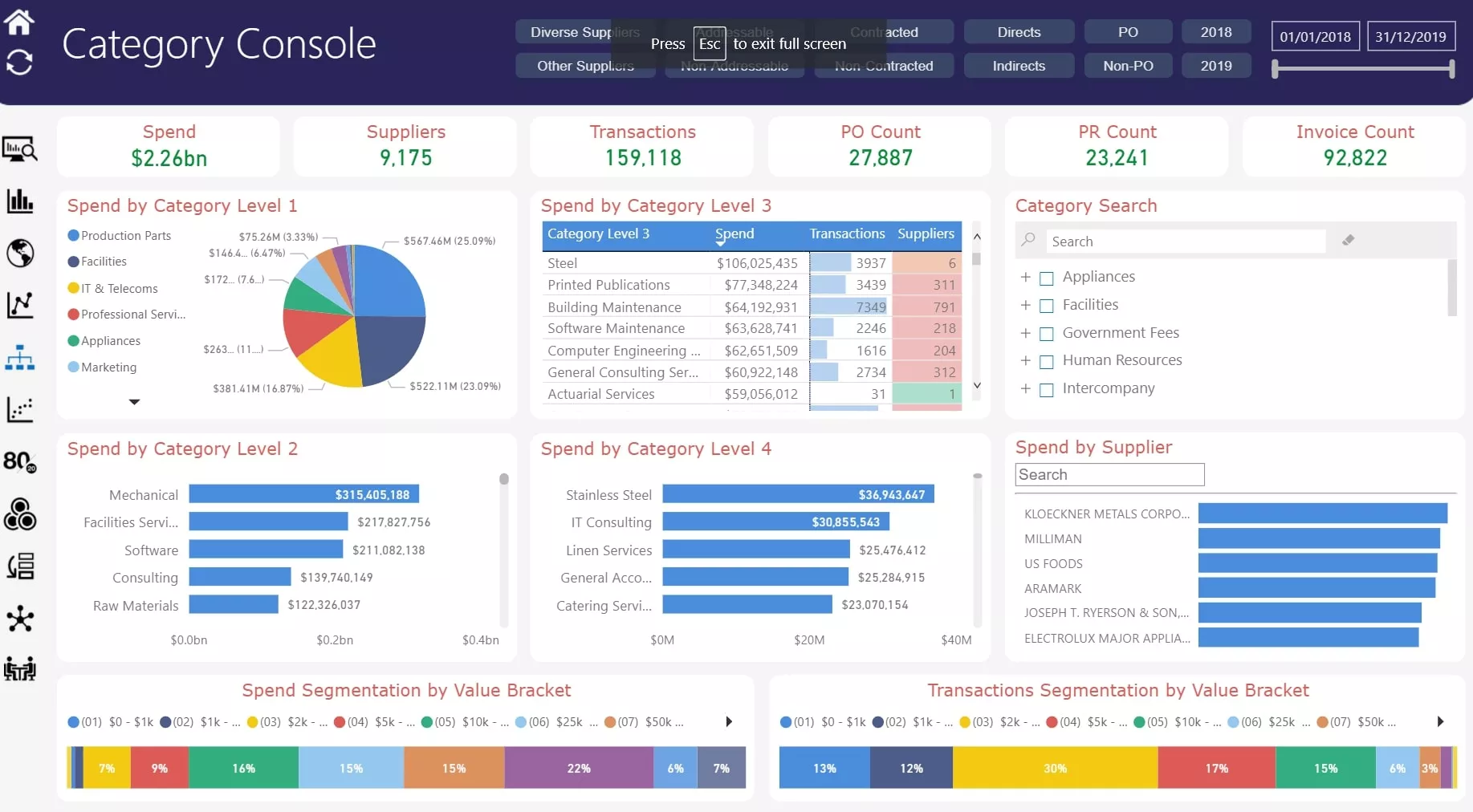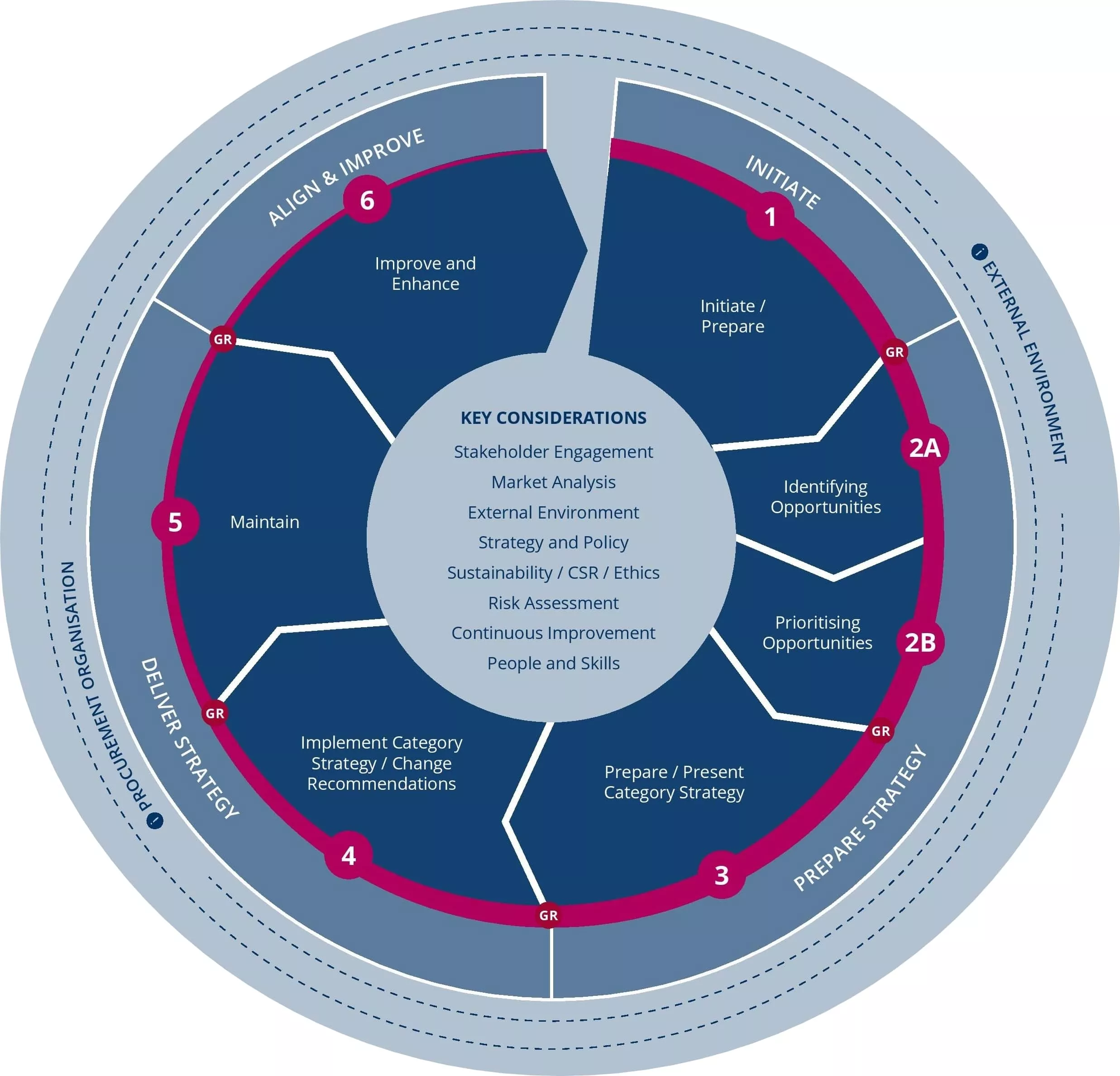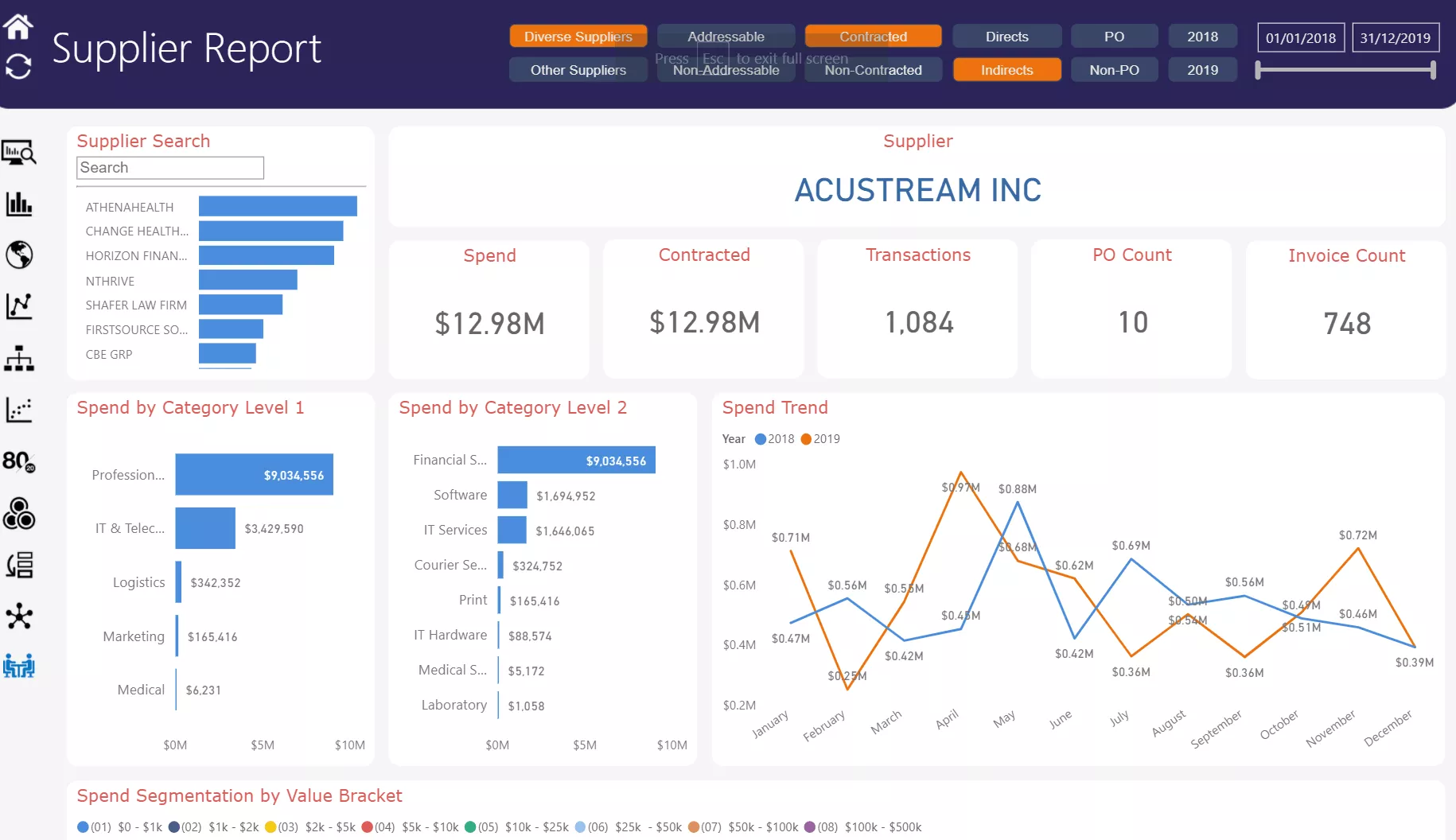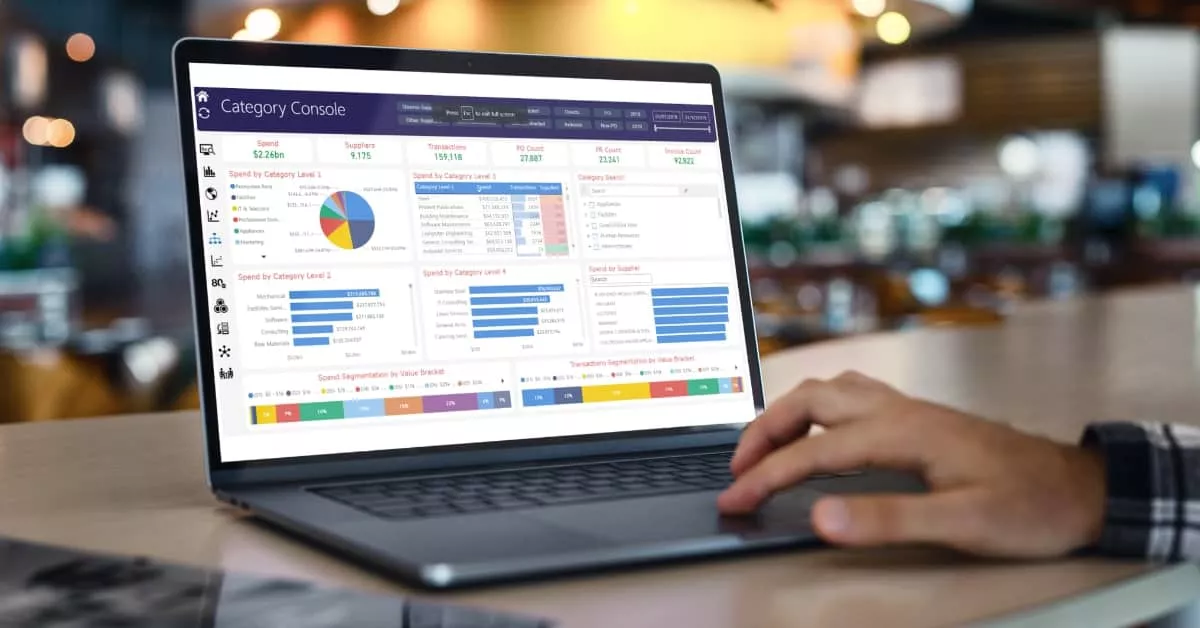Category Management is a strategic approach to procurement where businesses segment their spend into areas that contain similar or related products enabling focus opportunities for consolidation and efficiency.
When we think of a company and its several departments, we must understand that one of the most important departments in any company is the Procurement department that delves into and handles organizational spend from start to end. This can touch on procurement for business continuity such as inventory purchasing, or procuring for business support such as IT. If a business is not able to plan a strategic approach within its department or quite clearly does not have a transparent procurement process then the act of spending can get out of control and also have a detrimental effect on the company, therefore, ensuring that small businesses and big businesses must resource practically and also pay heed to actual costs and keep all standard costs at a low – keeping on top of accounting is also key.
What is Category Management?
This, therefore, touches on one of the most popular topics in the Procurement world which is said to be ‘Category Management’. Category Management is a strategic approach to procurement where businesses segment their spend into areas that contain similar or related products enabling focus opportunities for consolidation and efficiency.
Category Management may involve:
- The splitting of direct and indirect products and inventory or services
- May relate to the dissecting of products and inventories or services by value, vendor, type, or volume.
- Associated theories that can be used to help the dissecting of products or services are Pareto (80/20 rule) and ABC Analysis.
- From these models, it is possible to see where high levels of cost are being accrued and where the focus should be placed.
To learn more, we interviewed Shannon Wegner:
- She is a procurement professional with 10 years of experience in international supply chain management, category management, and sourcing who has worked for diverse businesses and diverse vendors.
- She has also spent time as a National Account Sales Manager.
- Prior to Simfoni, Shannon was a Channel Manager at Brady Corporation, a large industrial safety organization.
- During her role as Channel Manager, she managed relationships with the top distributors.
- Shannon was also involved in the Women’s Leadership Alliance (WLA) as the Events Chair and various mentoring opportunities at Marquette University.
- Prior to her time at Brady, Shannon was a Sourcing Manager at Direct Supply Manufacturing. In her time at Direct Supply she was responsible for the sourcing exercises on new product development projects. She also managed the relationships for existing supply chains for both domestic and international vendors, working with diverse suppliers where she was able to implement her expertise.
- In previous roles, Shannon has done consulting with Accenture and Arthur Andersen and additional sourcing and marketing roles at Ace Hardware, Sanford Brands, Kohls Department Stores, and Roundy’s Supermarkets.
During the interview, we asked Shannon a few questions to answer in her own words. Define category management and why it is an important component within the procurement department. ‘’Category Management is the strategy of cost management and strategic supplier relationship management within an organization.’’

Why is Category Management important in Procurement?
Category Management is a critical component because it goes beyond just the buying of goods and guides the strategy of the team to build and develop supplier relationships to allow for deeper negotiations and program development.’’ We also wanted to know what Shannon felt was the most effective balance between clients and vendors in category management? ‘’The most effective balance between clients and vendors in category management is reliant upon open communication and honest negotiations. I always say – the only thing a supplier can say is ‘no’. I am always open to asking for more, but I am also always open to receiving pushback when my request is not received with a resoundingly positive response. Typically, the supplier and I can work through my request and come to a compromise and we both achieve a positive resolution.’’
What are the benefits of Category Management?
We know what Category Management is, how it is done and why is it important but what are the benefits?
Improved performance of vendors:- An operative and effective category management plan can aid your big or small business to work with vendors in a more effective style and can secure the time between the start and end of the process. Category management, if done tactically, can aid a new vendor or contract with layers of modifications.
Better client satisfaction:- Category management is the single responsibility of a category manager who looks after all the elements related to a given contract or service like sourcing requirements, collecting bids, and negotiating contracts with diverse suppliers. This provides plenty of time for business people to focus on their work and deliver diversity and value-based services to satisfy the client’s desires.
Improved relationships with diverse suppliers:- Management of category offers an opportunity to create contacts within the structure of the organization which is important for both big and small businesses. This should be your strategy and therefore enables the organization at the highest level and therefore, the designation of specific tasks takes place at the functional level. So, creating and organizing effective communication in such a way is a strategy that usually aids in improving relationships between all and diverse vendors.
Better insights into spending and negotiating product price so resources are met – accurate accounting:- Usually when a category is not maintained by anyone, there is hardly anyone who can provide vital insights into the accuracy of price, cost, and spending because no one is familiar with the contracts that are on the way. The full list of vendors is unidentified, and hence, the complete extent of expenditure is unknown too. It can facilitate a better understanding of expenditure of standard cost and actual cost on the existing as well as upcoming contracts.
What is the Category Management Process?
As Shannon worked in a Category role as a Category Manager, we were eager to find out how the process of category management has evolved over the years: ‘’The process of category management has evolved in many ways but above all, it has become more strategic at its core. There are more strategic discussions, negotiations, and overall planning sessions between those in Category roles and suppliers. In the past, there were just buyers buying but now there are deep relationships based on common knowledge and respect and they rely on each other to make program decisions and drive the category to growth and success. The Category Manager needs their vendor to be successful, keep on top of accounting, cost, and vice versa.’’
Learn More about Simfoni’s Automated Savings Tracking Software
And in her own words, Shannon explained what the biggest misperception is when it comes to Category Management: ‘’The biggest misperception is that Category Managers are just cutting purchase orders. Category Managers are having deep strategic discussions. They are building multi-year growth plans for their categories; they are doing in-depth category reviews and they are taking their category growth to the next level. They are not just cutting purchase orders or buying more products. They are growing and managing the category to achieve double-digit growth and they are leveraging their vendors to achieve these goals.’’
Finally, we were eager to find out what product Shannon Wegner suggests to her clients when it comes to Category Management: Simfoni Spend Analytics. I wasn’t lucky enough to have access to a tool like this when I was a Category Manager but it would have saved me a lot of time and countless Vlookups and pivot tables. It does so much of the analytical work that I needed to get to the data that I needed to get my job done. It would have been a Godsend.
Learn More:– AI in Procurement
How to do Category Management?
We also found the CIPS Category Management cycle to be especially useful as it is a model with a 4-phase process with six key activity steps to successfully procure significant categories of cost. You can apply elements of the model when you do not need to follow the full process. Category Management should not be confused with expenditure segmentation. It is a structured framework of activities designed to deliver superior outcomes. The cycle can help you to define a category management process and keep control of all standard costs through accurate accounting within the business and always keep the price in mind.

Credits CIPS.org
Learn more about- eProcurement
How is Spend Analysis used by Catagory Managers?
And finally, when we talk about Spend Analysis, Kaitlynn Sommers at Gartner defines this as, ”capturing and analyzing data transforms what we know today as spend analysis into broad procurement analytics that will drive automation in the areas of category management, sourcing and contracting.” Simfoni explains that this is the process of reviewing your current and historical cost spending. The strategy of the exercise is to reduce standard costs, improve strategic sourcing, and increase the efficiency of spend management. An analysis requires to spend data processed into KPIs and metrics and then visualized to show patterns to be able to work with all diverse businesses.
Learn more:- Spend Analytics Guide The comprehensive Guide by Simfoni’s Procurement Professionals
What is Supplier Management?
Every company purchases some quantity of goods and services from external contractors. These goods and services are vital to ensure the smooth functioning of a company. It is therefore important that the company engages properly with its contractors, establishes a proper relationship, manages the requirements, and communicates effectively about them to the vendors. All of the above play an important role in the success of the organization, which is why a comprehensive supplier management policy is essential. The management of all the contractors and contracts which are needed to support the IT services are included in supplier management. This process of supplier management recognizes the value of the contractor’s contribution. It then builds and manages a relationship with the contractor to sustain that contribution and improve supplier performance and supplier relationships.

The supplier management process is used to centrally review and manage the relationship with each contractor which is owned by an individual.
- It provides value for money to all the parties involved and benefits the entire supply chain
- It ensures that the targets in all the contractor agreements and contracts are resource aligned with the needs of the business and within the service level agreements.
- It ensures the seamless delivery of quality IT services which are aligned to the expectation of the business.
What is the Purpose of Supplier Management?
The main purpose of supplier management is to get adequate returns for the money spent on the vendors and provide seamless quality of service to the business. The main objectives for this are:
- To ensure that maximum value for money spent is obtained from all the vendors and contracts.
- To make sure that the underpinning contracts (UCs) and agreements with the suppliers are in line with the business needs and agreed on targets of the organization.
- To manage the supply chain and relationships with the various vendors and monitor their performance by keeping accurate records.
- To negotiate with the suppliers, finalize contracts, and manage them throughout their lifecycle.
- To establish and maintain a policy regarding suppliers and also to maintain a supporting Supplier Contract Management Information System.



